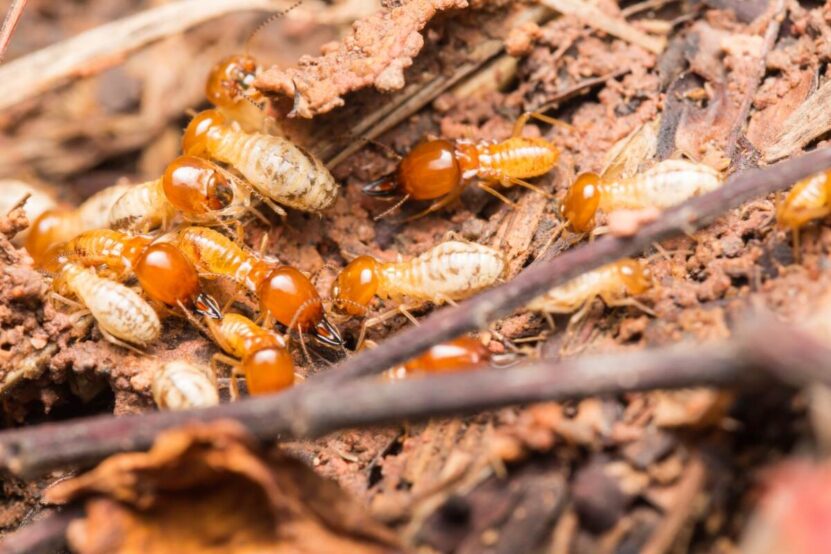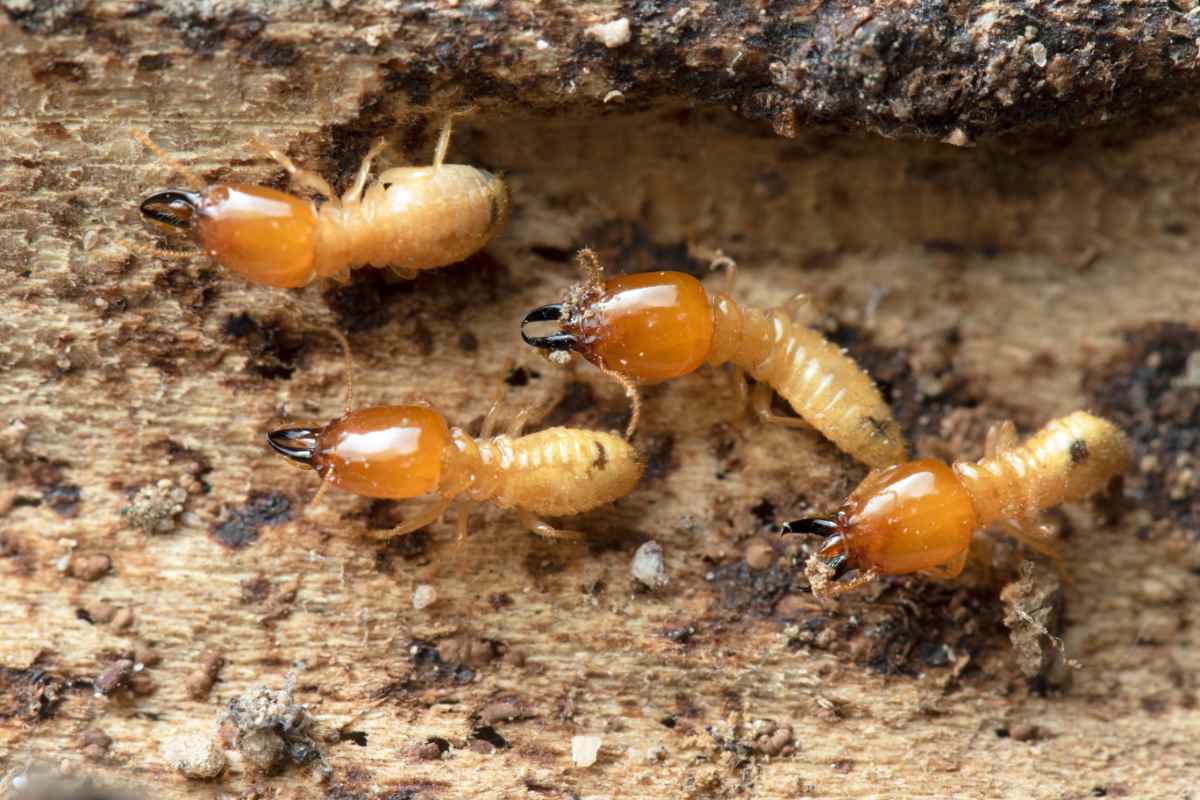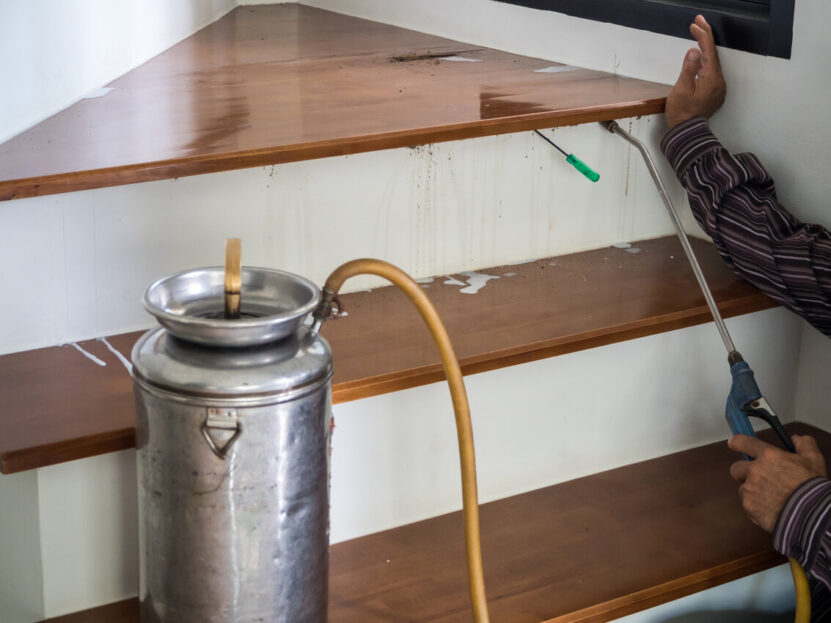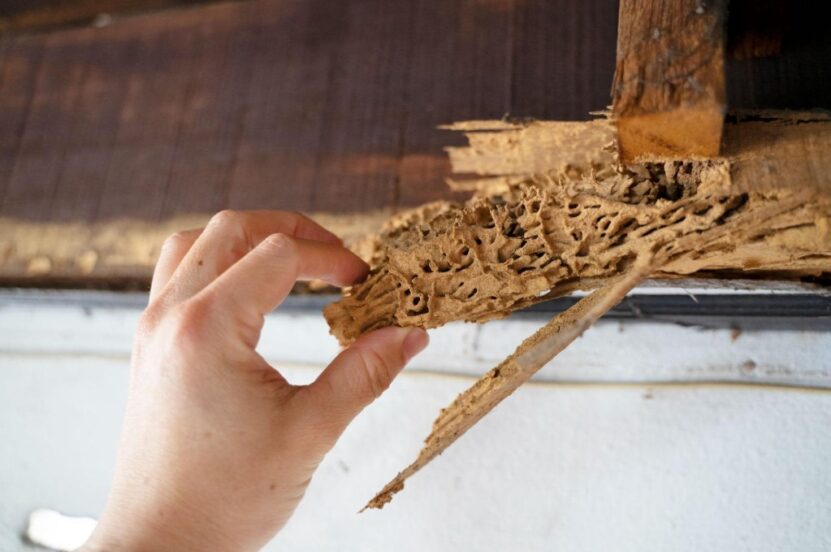
Termite management is crucial to protecting your home or property from significant damage.
Understanding common missteps in termite management can help prevent costly repairs and ensure the long-term integrity of your structure.
1. Ignoring Early Signs of Infestation
One of the most critical errors in termite management is ignoring the early signs of an infestation. Termites often leave subtle clues that can go unnoticed if you’re not vigilant.
Common early signs include discarded wings, which termites shed after swarming, mud tubes on exterior walls or foundations, and wood that sounds hollow when tapped. These signs indicate that termites are present and active within your property.
Early detection is paramount because termites can cause extensive damage if left unchecked. Professional inspections are highly recommended to catch infestations in their initial stages. A trained pest control professional can identify signs of termite activity that might be missed by the untrained eye.
Regular inspections and prompt action can save you from the severe structural damage termites can cause, leading to costly repairs and decreased property value. Being proactive and attentive to these early signs is the first step in effective termite management.
2. Overlooking Wood-to-Soil Contact

A common yet critical mistake in termite management is overlooking wood-to-soil contact. Termites thrive in environments where wood is in direct contact with soil, as it provides easy access to their food source. Structures such as wooden decks, fences, and foundation elements that touch the soil are particularly vulnerable.
Preventative measures include using pressure-treated wood, which is less attractive to termites, and ensuring proper sealing and painting of wooden structures. Another effective strategy is to maintain a barrier between the soil and wooden parts of your building.
This can be achieved by using concrete or metal supports that elevate the wood above the ground level. Landscaping practices should ensure that soil and mulch do not come into direct contact with the building’s wooden components.
Taking these steps minimizes the risk of termite infestation by creating a less hospitable environment for them. Proper maintenance and construction practices are essential to prevent termites from gaining easy access to wooden structures.
3. Neglecting Regular Inspections
Regular termite inspections are a vital component of effective termite management but are often neglected. It is recommended that professional termite inspections be conducted at least once a year, depending on the termite risk in your area. In regions with high termite activity, more frequent inspections may be necessary.
The benefits of routine checks are significant. Regular inspections help identify potential termite activity early, allowing for prompt treatment before major damage occurs. Inspections can reveal signs of termites that homeowners might miss, such as subtle damage within walls or beneath floors.
Professional inspectors use specialized tools and knowledge to detect infestations that are not visible to the naked eye.
By scheduling regular inspections, you can ensure that any signs of termite activity are caught early and dealt with swiftly. This proactive approach can save you considerable expense and stress in the long run by preventing severe structural damage and maintaining the integrity of your property.
4. Improper or Incomplete Treatments

Improper or incomplete termite treatments are common mistakes that can lead to persistent infestations and ongoing damage.
There are several types of termite treatments available, including chemical treatments, baiting systems, and heat extermination. Each method has its advantages and is suitable for different situations.
Chemical treatments involve applying termiticides to the soil around a structure to create a barrier that termites cannot cross. Baiting systems use poisoned bait to attract and kill termites. One such way is termite fumigation.
Heat extermination involves raising the temperature of infested areas to a level that is lethal to termites. Each of these methods requires careful application and thorough execution to be effective.
Incomplete treatments, such as missing critical areas or not applying enough termiticide, can leave parts of your property vulnerable. It is essential to follow a comprehensive treatment plan that addresses all potential entry points and colonies.
Working with a professional pest control service ensures that treatments are properly administered and monitored for effectiveness. Regular follow-ups and reapplications may be necessary to maintain protection against termites.
5. Failing to Address Moisture Issues
Moisture is a major attractant for termites, and failing to address moisture issues can lead to severe infestations. Termites thrive in damp environments because moisture softens wood, making it easier for them to chew through and digest.
Common sources of moisture problems include leaks in plumbing, poor drainage around the foundation, and missing or clogged gutters.
To mitigate moisture issues, it is essential to regularly inspect and maintain your home’s plumbing system, ensuring there are no leaks or drips.
Proper drainage around the foundation is also crucial; make sure that the ground slopes away from the house to prevent water from pooling near the foundation. Installing and maintaining gutters and downspouts can effectively direct rainwater away from your home, reducing moisture levels around the foundation.
Using dehumidifiers in crawl spaces and basements can help maintain low humidity levels, making these areas less hospitable to termites. Addressing moisture issues not only helps prevent termite infestations but also protects your home from other moisture-related problems, such as mold and rot.
6. Using Ineffective DIY Solutions

Many homeowners attempt to control termite infestations using do-it-yourself (DIY) methods, but these solutions are often ineffective and can even worsen the problem.
DIY treatments typically lack the potency and thoroughness needed to eliminate entire termite colonies. Products available to consumers, such as over-the-counter sprays and baits, may only kill visible termites but fail to reach the queen and deeper parts of the colony.
The limitations of DIY termite control highlight the advantages of professional pest control services. Professionals have access to more effective products and are trained to identify and treat termite infestations comprehensively. They can apply treatments that target the entire colony, including the queen, ensuring that the infestation is fully eradicated.
Moreover, professionals can provide ongoing monitoring and maintenance to prevent future infestations. While DIY methods might seem cost-effective initially, the long-term benefits and effectiveness of professional treatments often result in greater savings by preventing extensive damage and the need for repeated treatments.
The Bottom Line
Effective termite management requires vigilance and proactive measures.
By understanding and avoiding common missteps, you can protect your home from costly damage and ensure long-term structural integrity.
Regular inspections, proper treatments, and ongoing maintenance are key to successful termite control.
